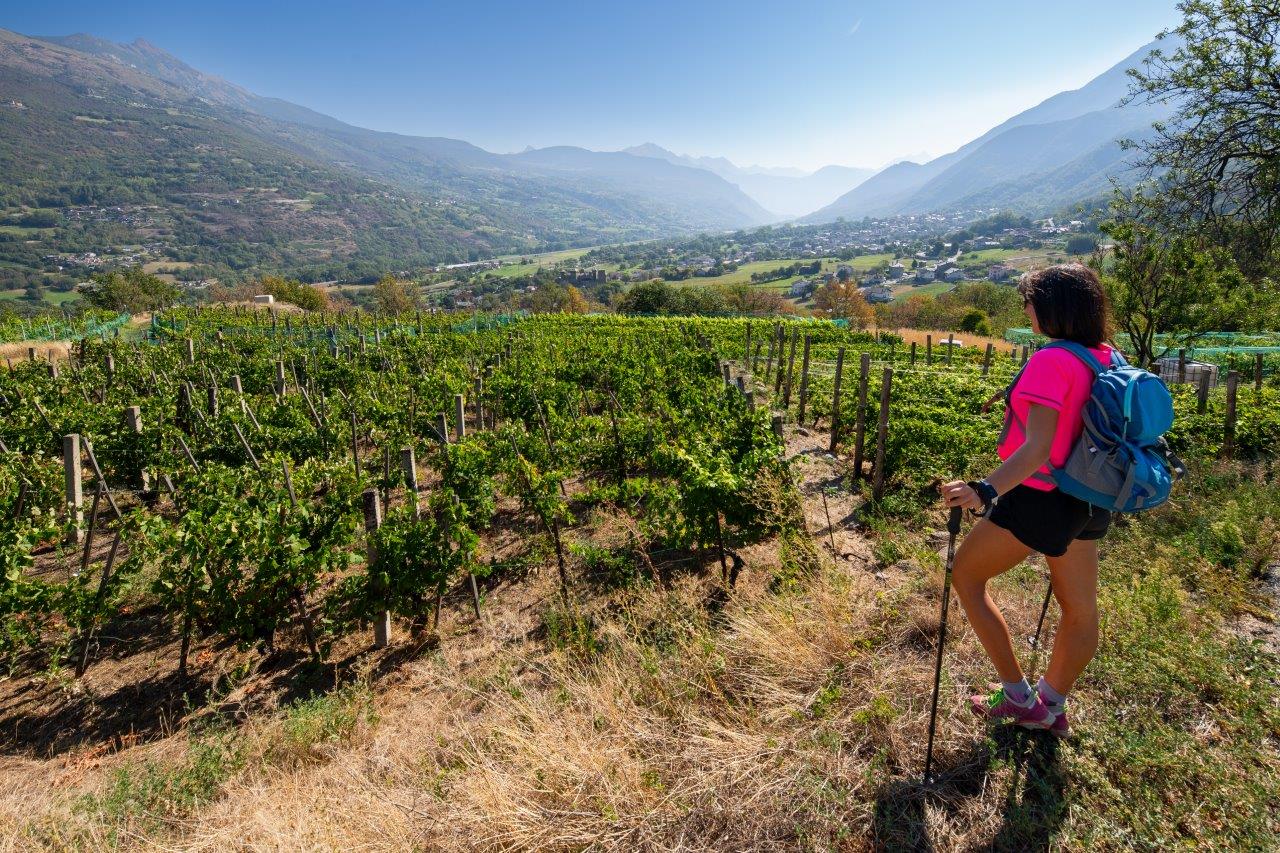
With trails surrounded by 4,000 metre summits featuring beautiful chapels, delightful hamlets, alpine nature and spectacular mountain vistas, the options for outdoor enthusiasts are aplenty in Aosta Valley. With over 2,000 trails is no surprise why the region is a hikers’ paradise.
If you are looking for a journey that lends itself to different thematic and seasonal variations that you can modulate according to your needs and time available, Cammino Balteo is an ideal choice: a circular itinerary of under 220 miles with an altitude between 500 and 1900 meters above sea level, Cammino Balteo is a circuit which can be taken in both directions. It is divided into 23 stages of about 4-6 hours each and takes you through more than 40 municipalities of the Aosta Valley region.
The journey takes you into the innermost heart of the territory and the local community, where human history has left the most evident signs of its passage, allowing you to discover the architecture of the villages as well as local traditions, still alive and deeply rooted, but also the rural landscape: pastures, vineyards, cellars and creameries. Cammino Balteo is a route that thrills in the presence of Roman and medieval history, but is also an immersion in nature: lakes, waterfalls, nature reserves and wooded areas.
Along the way, there are various points of interest that invite you to stop. Here are some of the highlights:
- Aymavilles Castle: A castle unique in its kind that combines medieval and baroque phases in its external appearance, the result of the architectural initiatives of the various members of the Challant family who, over the centuries, have adapted the building to the needs and tastes of the time.
- Located on the right slope of Valdigne, Lenterney waterfall is particularly striking, being fed by a basin of perennial glaciers from the Paramont group, and tumbles through the Derby forest. The waterfall is visible along the state road connecting Derby to La Salle.
- The mills of La Magdeleine still preserve a great charm, reminding us of ancient times, when mills were the hub of country life. In the hamlets of Brengon, Clou and Messelod, aligned by a small stream of water that comes from a source underneath Monte Tantané, there are eight mills; seven of them have been renovated and three, like they did a long time ago, are today able again to grind grains, that in the past were harvested on the sunny slopes of the hills that surrounded the town.
- The lake of Lod is a basin of glacial origin which gave its name to the small hamlet located nearby. It is the natural home of several lake botanical species including the marsh reed abundantly present around its banks.
- Fort of Bard: Imposing nineteenth-century fortress, it is today a cultural centre which houses various museums, including the museum of the Alps and important temporary exhibitions.
- Pontboset’s Bridges: In a rocky and sloping valley like Champorcher, crossing the riverbanks was not an easy task. Placing the bridge foundations on top of rocky gulfs, over turbulent waters, the master builders of the XVII and XVIII centuries created masterpieces, that still today stand and resist the impressive floods. Only 6 km from the central valley, at the chieftown of Pontboset, a path joins different winding mule-back bridges on the Rathus river; these bridges lead to the sunny hillside where there are numerous abandoned villages.
About Aosta Valley: The smallest region of Italy located in the Northwest of the country; Aosta Valley boasts spectacular scenery, world-class skiing and snowboarding, food of the highest quality and a history stretching back to Roman times. At the heart of the alps and bordered by France and Switzerland, Aosta Valley is surrounded by some of the highest peaks in Europe: Cervino, Monte Rosa, Gran Paradiso and the king of them all, Mont Blanc, which at 15,781 feet is the highest mountain in Europe, the roof of the old Continent. With Turin, Milan and Geneva airports all within easy reach, the Aosta Valley resorts are among the easiest to get to from the UK making it an ideal destination for a weekend or short break. For more information on Aosta Valley visit: www.aosta-valley.co.uk
